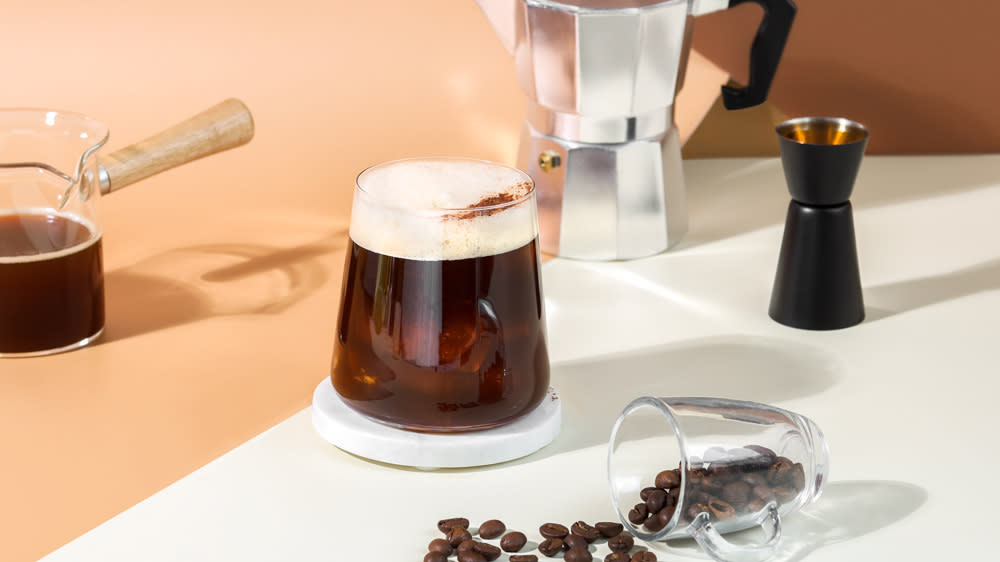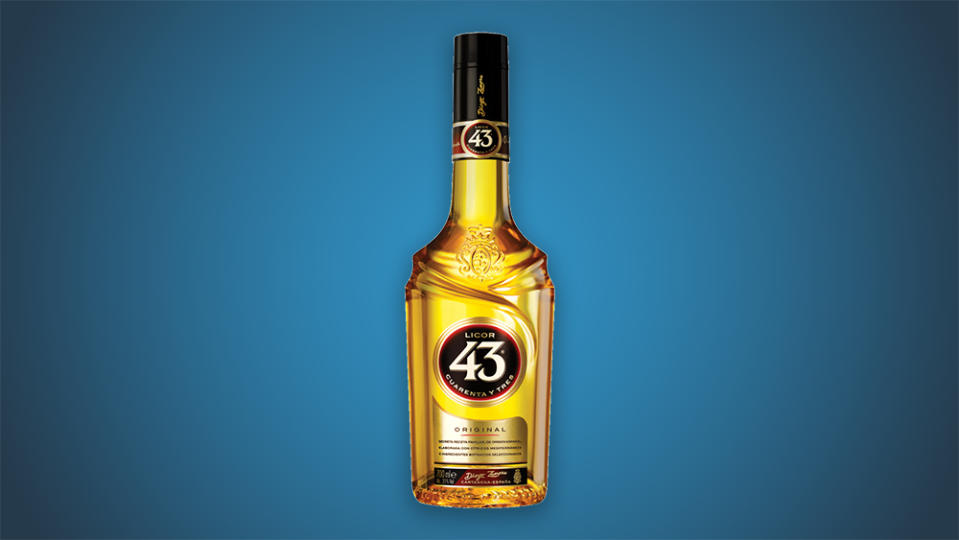How to Make a Carajillo, the Coffee Cocktail That’s Better Than Your Espresso Martini

The Carajillo has changed. The drink, like so many of us, had to leave home to find itself.
The Carajillo was invented in Spain, where traditionally, it has been on the day shift. A working-class Spaniard—because of a hangover or a hard day ahead or just for the sheer hell of it—would spike their morning coffee with a nip of brandy or rum. This was the original Carajillo (or “Cremaet”), and what that word will get you in Spain is hot, boozy, usually unsweetened and unfussy. Add alcohol to coffee and you’re done. Ask a Spaniard for any tips on making a great one, and it’s easy to imagine them responding “quickly” and “with less talking.”
More from Robb Report
How to Make an Americano, the Perfect Cocktail to Pregame Your Thanksgiving Feast
Billy Reid and Williams Sonoma Teamed up on a Stylish Barware Collection
How to Make a Little Italy, a Manhattan for People Who Drink Their Coffee Black
In Mexico, however, the Carajillo had something of a rumspringa, and found it enjoyed the nightlife. If our aforementioned Spaniard were out at the trendiest restaurant in Mexico City, they would likely be surprised when, after all the food was finished, the host ordered a round of Carajillos for the table. And that Spaniard would be surprised further still when the drinks came not hot and sugarless but iced and sweet, rich with espresso and made decadent with something they’d likely recognize, a Spanish vanilla liqueur called Licor 43.
These are the two Carajillos, co-existing as if jumbled by a game of cultural telephone. Both are boozy coffees. Both are roughly the same size and shape, but the experience, environment and culture of them couldn’t be more different. It’s like if you heard sloppy joes were extremely popular in Australia, except in Australia a “sloppy joe” is a beef Wellington.
The Spanish version was first, but it’s the Mexican Carajillo, especially over the last 10 years, that has enjoyed international success. While any spiked coffee has its charms, the Carajillo has become its best self with Licor 43. Its indulgent vanilla complexity adds layers of depth and a respectable pour of alcohol under the espresso, making something that’s sweet, bitter, strong and indulgent, and crucially, not too much of any of them. It’s one of those things it’s hard to say no to, one that you’re never not in the mood for, and in its short life has earned the right to stand shoulder to shoulder with the Irish Coffee and Espresso Martini in the coffee cocktail hall of fame, with the added benefit of being even simpler to make. Which is exactly what you need whether you’re waking up with a Carijillo or finishing off your night with one.
Carajillo
1.5 oz. espresso or cold brew
1.5 oz. Licor 43
Add ingredients to cocktail tin with ice, shake hard for eight to 10 seconds to develop a good foam. Strain over fresh ice into a rocks glass and garnish with an orange peel.
NOTES ON INGREDIENTS

Preparation: Because the unsweetened coffee is less dense than the liqueur, it will float on top if you pour it gently enough, and many Carajillos are served this way. Personally, though, I much prefer shaking on ice—not only is the sweetness more acceptable when it’s ice cold but shaking gives it a beautiful big head and a fluffy texture.
Coffee: I wish I could say that cold brew makes as good of a Carajillo as espresso, but I can’t—the texture is different, and the texture of fresh or even semi-fresh espresso is inimitable while cold brew, comparatively, reads a bit flat. That being said, if you don’t have access to espresso, you can make this with cold brew concentrate and it will still have a (slightly smaller) foamy head and still be totally delicious. And if all you have is strong coffee, you can still make it, just add more coffee, to taste. Any way you combine these, it’ll be great.
Licor 43: Licor 43 is a Spanish liqueur made from 43 ingredients, but most present is citrus and a long, luxuriant vanilla finish. Coffee can taste good with a bunch of booze (Irish whiskey, añejo tequila, Grand Marnier and many others) but the exact balance of proof, sweetness and profile of Licor 43 is what makes the Carajillo work. Accept no substitutes.
Ratios & Ingredients: While the above does have a pronounced sweetness, the relatively high proof of the Licor 43 (high for a liqueur, anyway, at 31 percent) helps dry it out, as does the bitterness of the coffee. You can reduce the liqueur to 1 oz. and still be fine. Any less than that and it’s still good but isn’t quite so mesmerizing. And if you want to throw a half-ounce of brandy or dark rum in there, feel that freedom, though I personally don’t think it
Best of Robb Report
Why a Heritage Turkey Is the Best Thanksgiving Bird—and How to Get One
The 10 Best Wines to Pair With Steak, From Cabernet to Malbec
Sign up for Robb Report's Newsletter. For the latest news, follow us on Facebook, Twitter, and Instagram.

